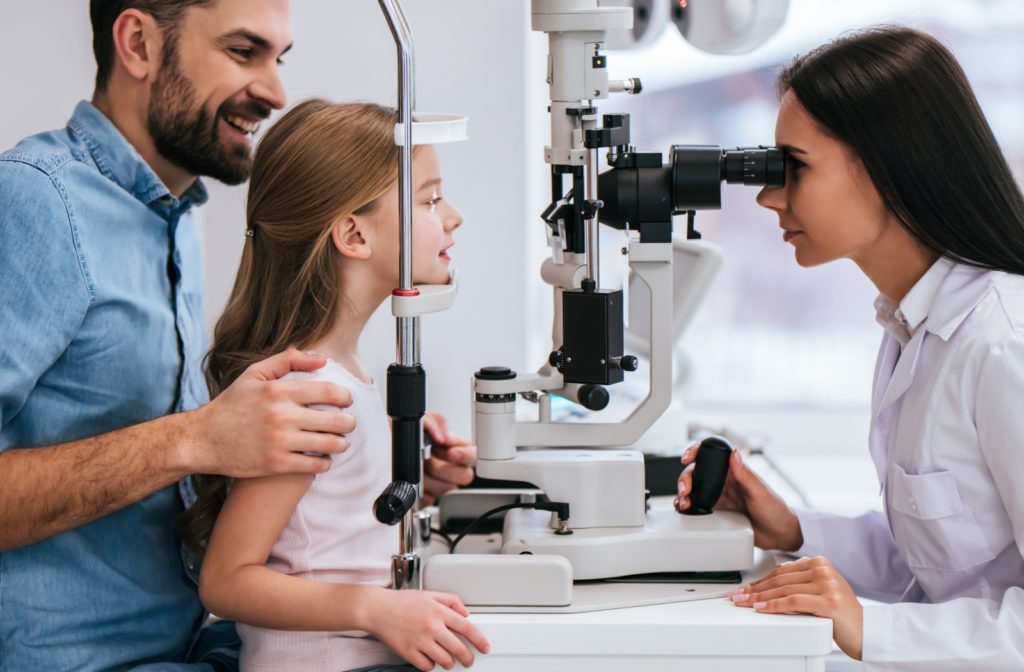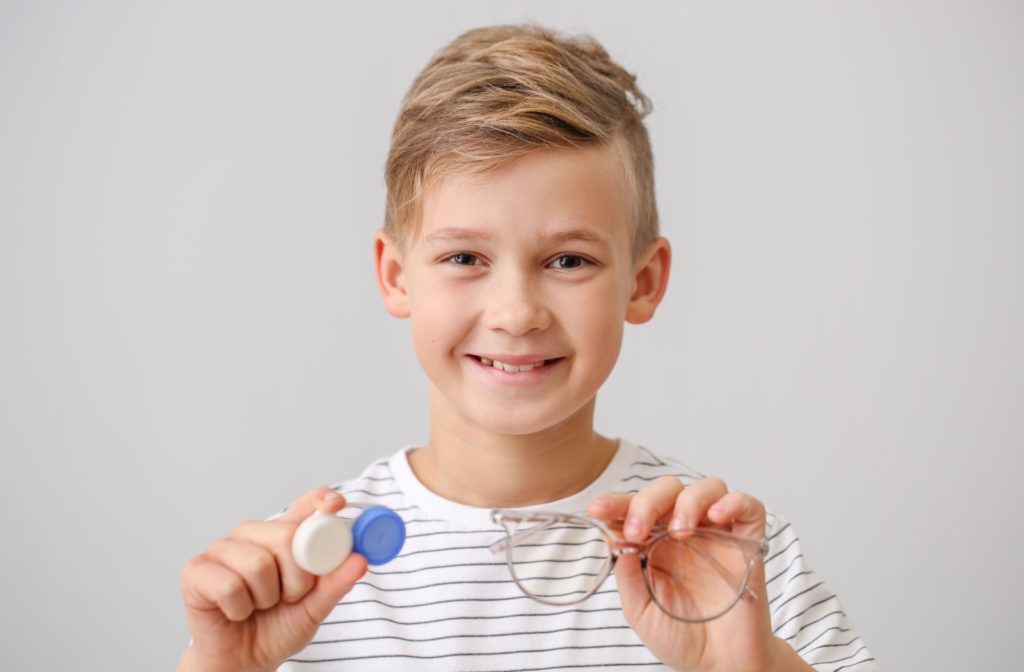Myopia, more commonly called nearsightedness, is an extremely common problem known to cause blurry vision. However, it’s about much more than just vision.
This condition can cause problems with the physical shape of the eye itself and increases the risk of other eye conditions later in life. Fortunately, your optometrist can intervene through myopia control to help correct your child’s myopia.
5 ways to correct myopia include:
- Atropine eye drops
- Orthokeratology
- MiSight contact lenses
- NaturalVue lenses
- Specialty lenses
1. Atropine Eye Drops
Eye drops are a versatile approach to treating all kinds of common eye conditions—and myopia is no exception. To help reduce how the eye changes over time, a special concentrated eye drop is used called Atropine.
These drops contain a small dosage of a paralytic medicine designed to temporarily relax the muscles inside the eye. They dilate the pupil and stop the focusing muscles inside the eye, sending signals to the brain that it can slow myopia’s development.
Atropine drops are often used closely alongside other methods of myopia control. While they can be extremely effective, they work best when used as part of a multi-pronged approach.
2. Orthokeratology
Orthokeratology, often referred to as ortho-k, is an extremely innovative approach to treating myopia.
The vision issues caused by myopia are closely associated with the physical shape of the eye itself. Myopia causes the eye to elongate and alters how it refracts light, leading to blurry vision and eye strain. So what if there was a way to reshape the eye itself so it can resume refracting light as it should?
This is the core premise of ortho-k. Special contact lenses are worn overnight while you sleep, gently applying pressure on the cornea to reshape the front of your eye. Once removed, your eye can properly refract light during the day, giving you clear vision without needing other contacts or eyeglass lenses.
This makes ortho-k a popular way to deal with myopia. However, it’s not just about clear vision—ortho-k can actually reduce how far myopia progresses by almost 50%. It’s a simple non-invasive approach to correcting vision with a long-term benefit.
3. MiSight Contact Lenses
MiSight contact lenses are specifically designed for myopia management in children ages 8 to 12. These are daily disposable lenses that incorporate a unique ring-based design into each lens.
When your child wears MiSight lenses, they’re looking through an indistinguishable bulls-eye design. Each ring has a different focusing power—some provide regular clear vision while others redirect light throughout the eye. These lenses subtly send signals to the brain to control how the eye elongates, all while providing clear vision.
This dual-focus design can reduce how far myopia progresses by almost 60% on average. These lenses are an excellent way to help correct myopia, and because they’re daily disposable lenses, there’s no need to worry about storage or lens cleaning.
4. NaturalVue Lenses
NaturalVue lenses are a special type of contact lens designed for myopia and presbyopia (a type of refractive error that develops due to age-related changes in the eye).
These lenses incorporate Neurofocus Optics technology and are carefully made to provide exceptionally clear vision while still slowing how myopia progresses.
The unique design of the NaturalVue contact lenses includes:
- An extended depth of focus
- A central zone for distance vision
- A peripheral zone for near and intermediate vision
While they provide clear vision, these lenses also force a state of peripheral defocus to slow the eye’s elongation. This means that with a simple pair of contact lenses, your child can enjoy clear, comfortable vision and prevent myopia-related problems later in life.

5. Specialty Lenses
Sometimes, a combination of other approaches is needed to properly address your child’s myopia. Whether we think toric lenses, scleral lenses, or multifocal lenses are the right approach, our team can carefully examine your child’s eyes to find the right approach.
- Multifocal Lenses: These lenses are specifically designed with multiple zones of correction that help manage myopia by altering how light focuses on the peripheral retina. They are effective in controlling the progression of myopia in children and are available in both contact lenses and eyeglasses, with contact lenses generally being more effective.
- Toric Lenses: These are primarily used to correct astigmatism which can coexist with myopia. While toric lenses themselves do not control myopia progression, they ensure accurate correction of astigmatism supporting the effectiveness of other myopia management strategies.
- Scleral Lenses: Large-diameter lenses that cover the entire corneal surface and rest on the sclera, scleral lenses are used mainly for severe corneal irregularities or other eye conditions, not specifically for myopia control. They can provide an alternative for vision correction in children where regular myopia control lenses do not fit well due to irregular corneas.
Find the Right Fit at Dr. Bladh, O.D.
We offer a range of customized contact lenses and eyeglass lenses designed to help with myopia control at Dr. Taylor Bladh, O.D. So if you have a child diagnosed with myopia, book an appointment with us today. We’re here to help keep your child’s vision—and future—clear and bright.



